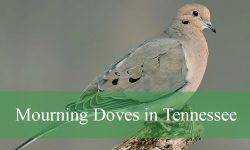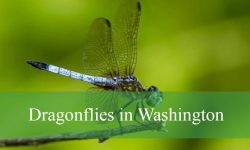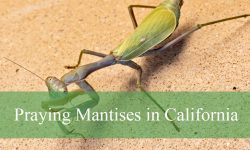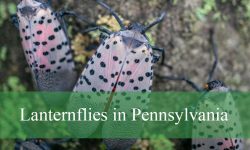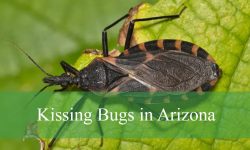Many insects and arachnids in Texas can pose significant threats to human health. From venomous spiders to aggressive ants and stinging scorpions, knowing which bugs are dangerous can help you stay safe while enjoying the outdoors.
These bugs often thrive in warm, humid environments and are commonly found in homes, gardens, wooded areas, and fields. Learning to identify them is crucial, as their bites or stings can cause pain, allergic reactions, or transmit diseases.
This guide covers 12 types of dangerous bugs in Texas, providing detailed descriptions, identification tips, habitats, and safety precautions. With this information, you can recognize these pests and take preventive measures to avoid encounters.
Different Types of Dangerous Bugs Found in Texas
Brown Recluse Spider (Loxosceles reclusa)
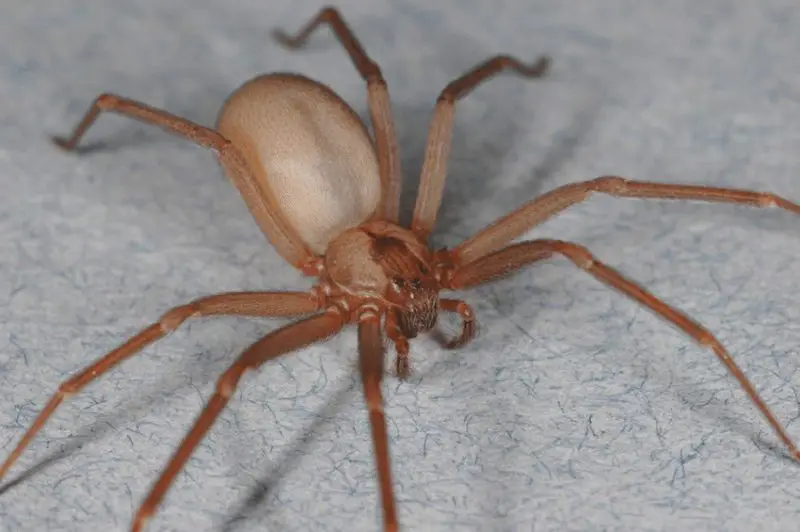
The Brown Recluse Spider is a medium-sized spider, usually ranging from 6 to 20 mm in body length. Its most distinguishing feature is the violin-shaped marking on its back, with the neck of the violin pointing toward the abdomen. The spider’s color can vary from light tan to dark brown, making it blend easily into woodpiles, closets, and dark corners.
Brown Recluse Spiders are nocturnal and prefer secluded, undisturbed areas. They build irregular, loose webs in hidden spaces rather than for catching prey. During the day, they remain in hiding and rarely wander out unless searching for food or mates.
Their bite is venomous, causing local necrosis and sometimes systemic symptoms such as fever, chills, and nausea. While fatalities are extremely rare, bites require medical attention to prevent severe infection and tissue damage.
Brown Recluses are commonly found throughout central and northern Texas, thriving in warm, dry environments. They often inhabit homes, sheds, and barns, and their bites are accidental, usually occurring when someone disturbs their hiding spot.
Black Widow Spider (Latrodectus mactans)
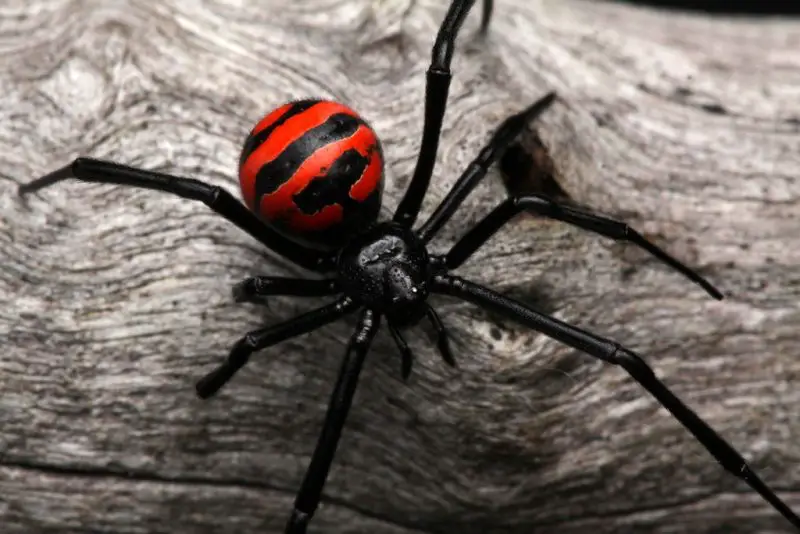
The Black Widow Spider is easily recognized by its shiny black body and the distinctive red hourglass marking on the underside of its abdomen. Adult females measure about 1.5 inches including leg span, while males are significantly smaller and less venomous. The spider’s web is irregular and often constructed near the ground in dark, sheltered areas.
Black Widows are shy but highly venomous. Their venom contains neurotoxins that affect the nervous system, leading to symptoms such as muscle cramps, pain, sweating, and in severe cases, respiratory difficulty. Bites are rarely fatal for healthy adults, but medical attention is recommended.
These spiders are predominantly nocturnal and prefer undisturbed locations such as woodpiles, garages, crawl spaces, and dense vegetation. They rarely bite unless provoked, often giving a warning by shaking their web.
Black Widows are widespread across Texas, particularly in rural and suburban areas with abundant hiding spots. Awareness of their preferred habitats helps reduce the risk of accidental encounters.
Kissing Bug (Triatomine bug)
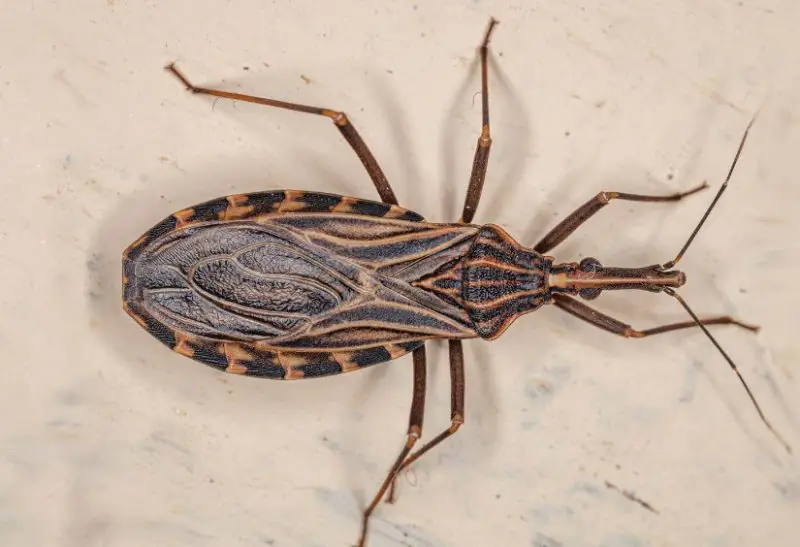
Kissing Bugs are large, blood-sucking insects typically measuring 1 to 3 cm in length. They are brown or black with red or orange markings along their edges. These nocturnal bugs feed primarily on mammals, often biting around the face and lips, which gives them their common name.
Kissing Bugs are vectors of Chagas disease, caused by the parasite Trypanosoma cruzi. While not every bite transmits the disease, it can lead to serious heart and digestive complications if infected. Symptoms of Chagas disease may appear years after the initial exposure.
Kissing Bugs are nocturnal and hide during the day in cracks, crevices, under porches, and inside poorly sealed homes. They are attracted to lights and carbon dioxide, which often brings them close to humans at night.
In Texas, Kissing Bugs are found mostly in southern regions and rural areas. Proper home maintenance, sealing cracks, and using screens are essential precautions to prevent indoor infestations and bites.
Striped Bark Scorpion (Centruroides vittatus)
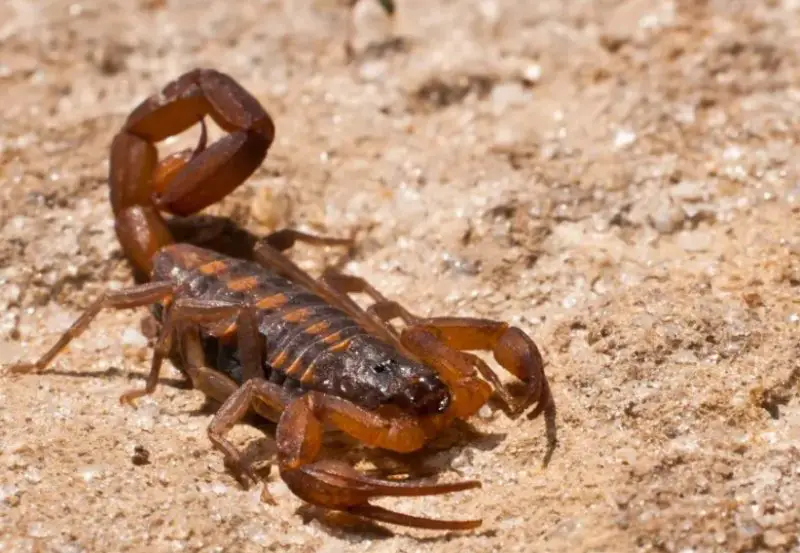
The Striped Bark Scorpion is the most common scorpion in Texas, measuring 2.5 to 7 cm in length. It has a yellowish-brown body with two distinctive dark stripes running along its back. The scorpion’s stinger delivers venom, which can cause intense pain and localized swelling.
These scorpions are primarily nocturnal hunters, preying on insects and small invertebrates. They are excellent climbers and often hide under rocks, bark, and logs during the day. Occasionally, they enter homes in search of food or moisture.
The venom of the Striped Bark Scorpion is rarely lethal to healthy adults but can be dangerous for young children, the elderly, or those with allergies. Symptoms include sharp pain at the sting site, numbness, and tingling. Severe reactions may require immediate medical attention.
This species is widespread across Texas, particularly in the Hill Country and western regions. Preventing indoor encounters involves checking shoes, bedding, and clothing, as well as using pest control measures around homes.
Red Imported Fire Ant (Solenopsis invicta)
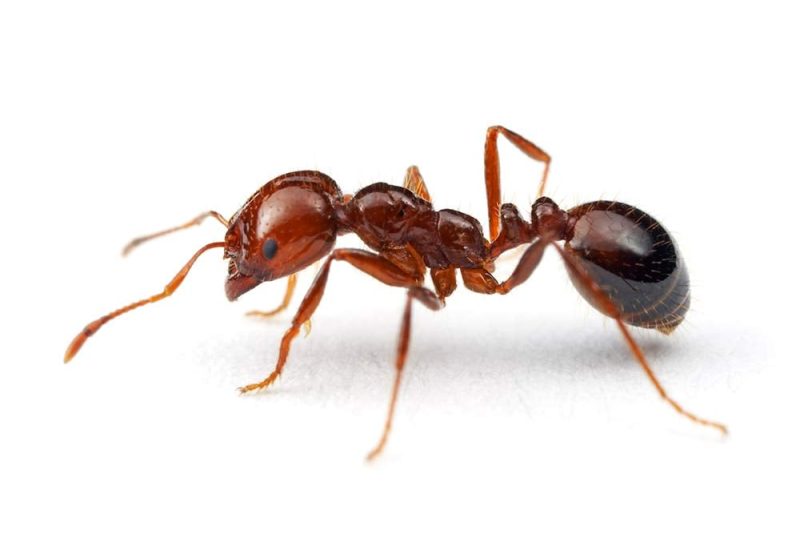
The Red Imported Fire Ant is a small, reddish-brown ant measuring about 2 to 6 mm in length. They are highly aggressive and build large mound-shaped nests, often found in lawns, pastures, and open fields. Their bites are venomous and delivered along with a sting, causing intense burning and itching.
Fire Ants are social insects that attack in large numbers when disturbed. Their venom contains alkaloids that trigger a burning sensation, and repeated stings can cause severe allergic reactions, including anaphylaxis in sensitive individuals.
These ants are omnivorous, feeding on insects, plants, and human food. They are especially active during warm months and can rapidly spread throughout yards, farms, and urban areas, making them a significant pest.
Red Imported Fire Ants are widespread throughout Texas, particularly in the eastern and central regions. Effective prevention includes mound treatment with insecticides, avoiding disturbing nests, and wearing protective clothing when in infested areas.
Lone Star Tick (Amblyomma americanum)
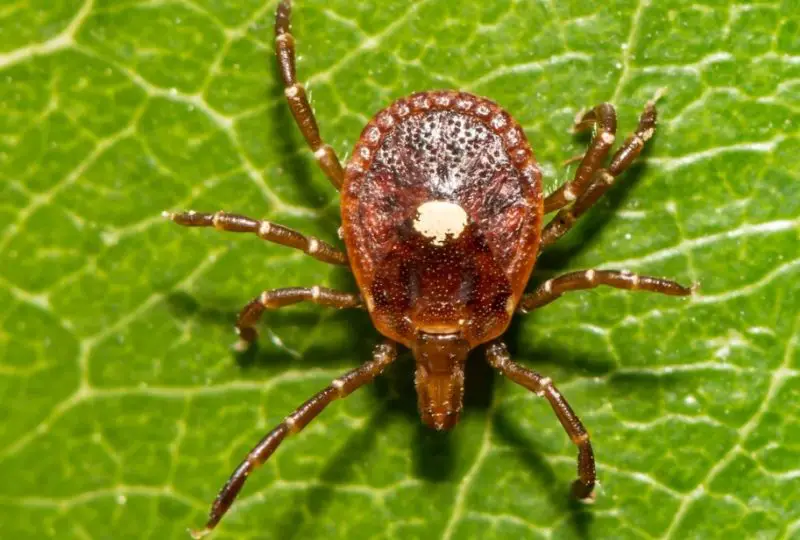
The Lone Star Tick is a medium-sized tick, typically 3 to 5 mm long in its adult form. Females are easily identified by a distinctive white dot on their back, while males have scattered white markings. These ticks are reddish-brown and have a flattened oval body, making them adept at attaching to mammals.
Lone Star Ticks are aggressive feeders that attach to humans and animals, often causing itching, redness, and swelling. They are known vectors for several diseases, including Ehrlichiosis, Tularemia, and the recently recognized alpha-gal allergy, which can cause red meat allergies.
They are active year-round in Texas but peak in spring and early summer. Lone Star Ticks prefer wooded areas, grassy fields, and brushy edges, often waiting on vegetation to latch onto passing hosts.
Lone Star Ticks are especially common in eastern and central Texas. Preventative measures include using insect repellents, wearing long sleeves and pants, and checking for ticks after spending time outdoors.
Blacklegged Tick (Deer Tick, Ixodes scapularis)
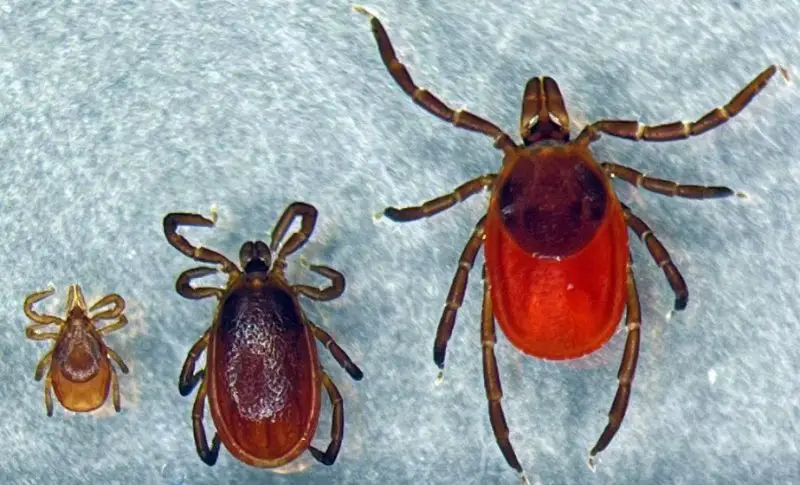
The Blacklegged Tick, also known as the Deer Tick, is small, about 3 mm in length before feeding, and dark brown to reddish in color. Its tiny size makes it easy to overlook, especially in dense grass or leaf litter.
This tick is infamous for transmitting Lyme disease, along with other infections such as Anaplasmosis and Babesiosis. Early detection of bites is crucial, as symptoms like rash, fever, and fatigue can develop days to weeks after exposure.
Blacklegged Ticks are most active during spring and fall, residing in wooded areas, fields, and along trails. They climb onto passing hosts using vegetation and feed on blood over several days.
In Texas, they are less widespread than Lone Star Ticks but are found in the eastern and northeastern regions. Protective clothing, tick repellents, and frequent body checks help reduce the risk of bites and disease transmission.
American Dog Tick (Dermacentor variabilis)
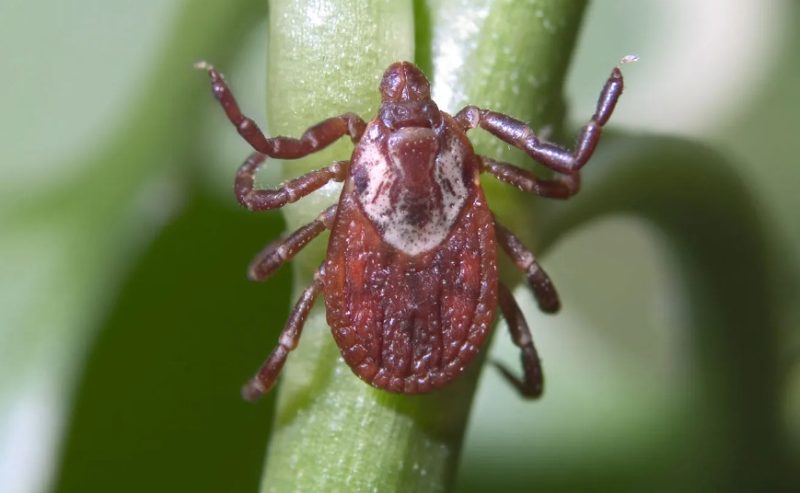
The American Dog Tick is a medium-sized, reddish-brown tick with ornate white or cream-colored patterns on its back. Adults measure about 5 mm in length, and their flattened bodies allow them to attach securely to hosts.
These ticks are vectors for Rocky Mountain Spotted Fever and Tularemia, which can be severe if untreated. Bites are typically painless initially, but prolonged attachment increases the risk of infection.
American Dog Ticks are found in grassy fields, along roadsides, and at the edges of wooded areas. They primarily feed on dogs, other mammals, and occasionally humans, especially during spring and early summer.
In Texas, American Dog Ticks are common in eastern and central areas. Preventative measures include controlling vegetation, using tick repellents on pets, and avoiding high-risk areas without protective clothing.
Texas Red-headed Centipede (Scolopendra heros)
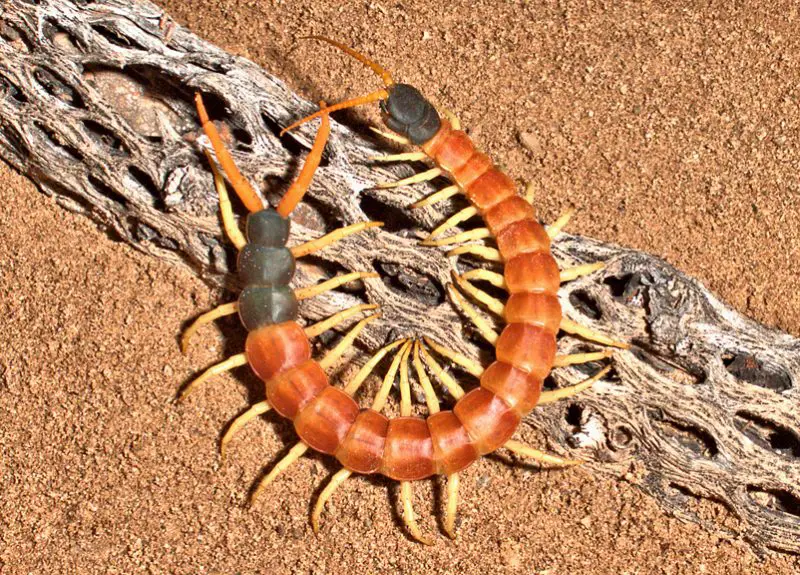
The Texas Red-headed Centipede is a large, elongated arthropod reaching 10–20 cm in length. Its most distinctive feature is a bright red head and first pair of legs, with the body gradually darkening toward the tail. It has numerous jointed legs that allow fast, agile movement.
These centipedes are predatory, feeding on insects, spiders, and even small vertebrates. They inject venom through their forcipules, causing sharp, burning pain, redness, and localized swelling. While not usually fatal, stings can be dangerous to children or allergic individuals.
Texas Red-headed Centipedes are nocturnal and prefer dark, damp habitats such as under rocks, logs, and leaf litter. They may occasionally enter homes in search of prey or moisture.
They are widespread in central and southern Texas. Caution is advised when working in gardens or natural areas, and protective gloves are recommended when moving debris where centipedes might hide.
Mosquitoes (Aedes, Culex, and Anopheles species)

Mosquitoes are small, flying insects with slender bodies and long proboscises for blood-feeding. Female mosquitoes are the ones that bite, requiring blood for egg development. They are active from dusk to dawn, though some species bite during the day.
Mosquitoes are vectors for multiple diseases, including West Nile Virus, Zika Virus, Dengue, and Eastern Equine Encephalitis. Symptoms of infection range from mild flu-like signs to severe neurological or systemic complications.
They breed in standing water, from ponds and puddles to containers around homes. Populations explode after heavy rain, making mosquito control critical to reduce disease transmission.
In Texas, mosquitoes are widespread across all regions, especially in humid eastern areas. Preventative strategies include eliminating standing water, using insect repellents, and installing screens on windows and doors.
Wasps, Hornets, and Yellowjackets
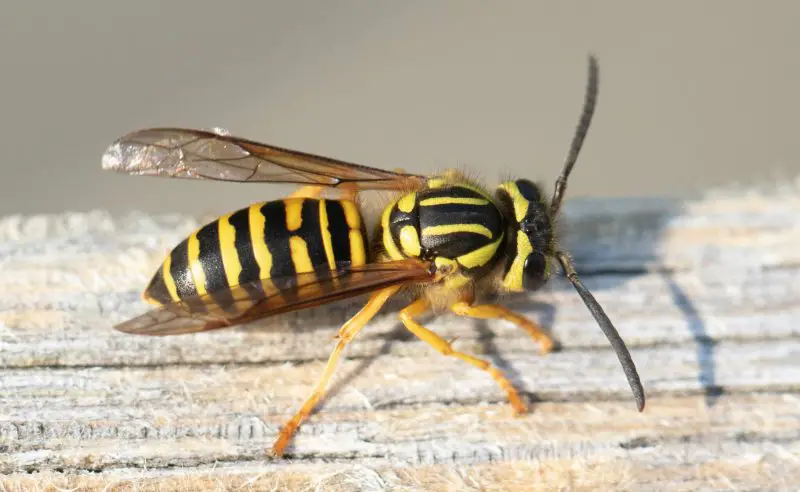
Wasps, hornets, and yellowjackets are stinging insects ranging from 1 to 3 cm in length, with black and yellow or black and white markings. Hornets are generally larger and more robust than typical wasps, while yellowjackets are smaller but highly aggressive. Their bodies are slender with a narrow “waist,” distinguishing them from bees.
These insects are highly defensive and can sting multiple times. Their venom causes pain, swelling, redness, and in allergic individuals, life-threatening anaphylaxis. Stings near the face, neck, or mouth are particularly dangerous.
They build nests in trees, shrubs, underground burrows, or inside wall cavities. Colonies are usually seasonal, peaking in late summer and early fall. These insects are also attracted to human food, increasing the risk of stings at picnics or outdoor gatherings.
Wasps, hornets, and yellowjackets are widespread throughout Texas. Safety measures include keeping a safe distance from nests, wearing protective clothing when gardening, and using professional pest control for nest removal.
Saddleback Caterpillar (Acharia stimulea)
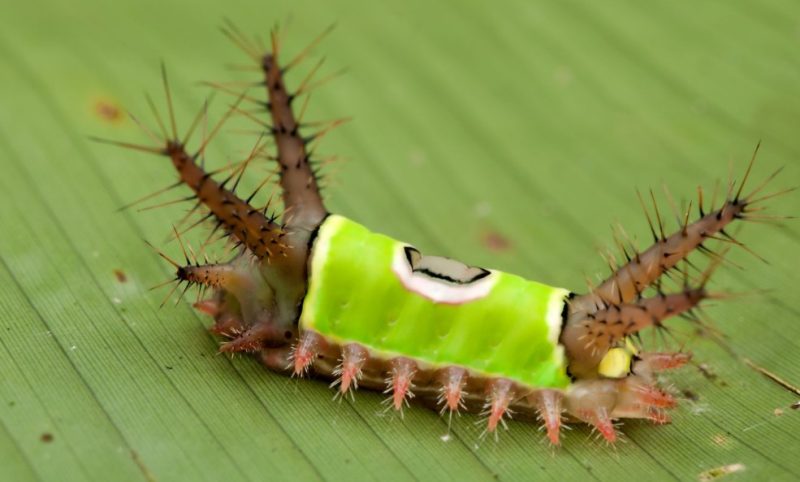
The Saddleback Caterpillar is a small but highly venomous larva, measuring 2.5–3.5 cm in length. Its appearance is striking: a green body with a brown “saddle” marking and spiny projections along its back. These spines contain venom that can penetrate human skin.
Contact with the spines causes immediate pain, swelling, redness, and sometimes nausea or rash. Severe allergic reactions are rare but possible, making prompt treatment important. The caterpillar’s sting is considered one of the most painful from insects in Texas.
Saddleback Caterpillars are found on leaves of trees, shrubs, and garden plants. They are generally slow-moving and rely on their bright colors as a warning to predators. Accidental contact often occurs when handling plants or reaching into foliage.
In Texas, they are widespread in wooded areas, gardens, and parks, especially during summer. Precautions include wearing gloves when gardening and carefully inspecting plants before handling.
FAQs About Dangerous Bugs in Texas
What are the most dangerous bugs in Texas?
Texas is home to several medically significant insects and arachnids. The most dangerous include Brown Recluse Spiders, Black Widow Spiders, Kissing Bugs, Striped Bark Scorpions, Red Imported Fire Ants, Lone Star Ticks, Deer Ticks, American Dog Ticks, Texas Red-headed Centipedes, Mosquitoes, Wasps/Hornets/Yellowjackets, and venomous caterpillars like the Saddleback Caterpillar.
How can I identify a Brown Recluse or Black Widow Spider?
Brown Recluse Spiders are light to dark brown with a violin-shaped marking on their back. Black Widow Spiders are shiny black with a distinctive red hourglass shape on the underside of the abdomen. Both prefer dark, secluded spaces, but Black Widows are generally found near ground level or in outdoor structures.
Are all tick bites dangerous?
Not all tick bites transmit disease, but certain species, such as Lone Star Ticks, Deer Ticks, and American Dog Ticks, can carry pathogens causing Lyme disease, Ehrlichiosis, Rocky Mountain Spotted Fever, or alpha-gal allergy. Early removal and proper monitoring of the bite site are essential to reduce risks.
What should I do if stung by a scorpion or centipede?
For stings from a Striped Bark Scorpion or Texas Red-headed Centipede, wash the area with soap and water, apply a cold compress, and take over-the-counter pain relief if needed. Seek immediate medical attention for children, the elderly, or anyone experiencing severe pain, allergic reactions, or difficulty breathing.
How can I prevent bites and stings from dangerous bugs in Texas?
Preventive measures include wearing long sleeves and pants when outdoors, using insect repellents, avoiding tall grass and wooded areas when possible, inspecting shoes and clothing, sealing cracks and gaps in homes, and eliminating standing water to reduce mosquito breeding sites. Additionally, check pets regularly for ticks and avoid disturbing nests or mounds of ants, wasps, and hornets.
When should I seek medical attention for insect or spider bites?
Seek immediate medical help if you experience severe pain, swelling, or redness that spreads quickly, difficulty breathing, dizziness, or symptoms of an allergic reaction. For tick bites, consult a doctor if fever, rash, or flu-like symptoms appear after a bite. Prompt medical care is crucial to prevent complications from venomous bites or disease transmission.

